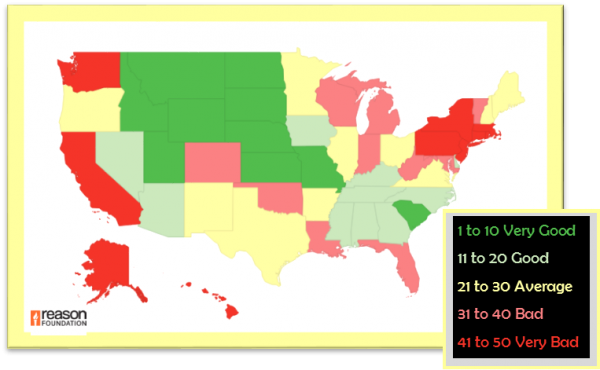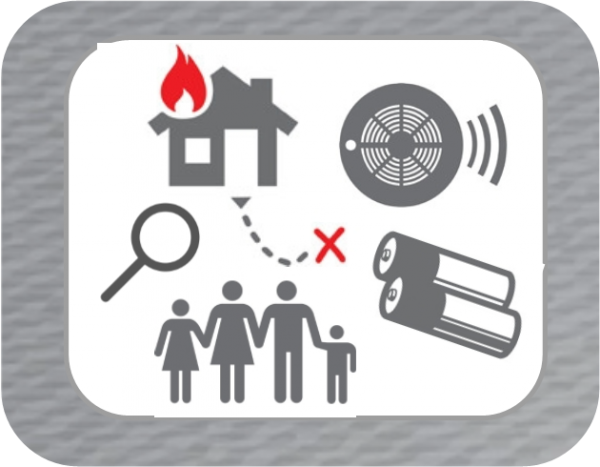State Data Plan, Technology Board, Review of Agency Data Required by Approved Legislation
/Connecticut’s commitment to advancing the use of, and public access to, electronic data was nudged forward during the just-concluded legislative session. The legislature approval a plan to put into law – and expand – an Executive Order by Governor Malloy issued four years ago that had increasingly made open data a state government priority. The legislation establishes data requirements for executive branch agencies, including authorizing the state’s Chief Data Officer (CDO) to direct agencies on data-related topics, requiring a biennial state data plan, and establishing a Connecticut Data Analysis Technology Advisory Board. It was approved without opposition by the House and Senate in the final week of the 2018 General Assembly session.
The plan authorizes the Office of Policy and Management (OPM) to designate an existing employee to serve as the CDO to direct executive branch agencies on data use, management, sharing, coordination, and formulation of the state data plan and transparency plans. It also requires executive agencies to annually inventory their data assets and submit the inventory to OPM, and requires OPM to continue operating and maintaining the Open Data Portal.
In regard to executive branch agencies, the legislation defines “high value data” as any data that the department head determines can increase an agency's accountability and responsiveness, improve public knowledge of an agency and its operations, further its core mission, or create economic opportunity; is critical to the agency's operation, frequently requested by the public, or used to satisfy any legislative or other reporting requirements; or responds to a need and demand identified through public consultation.
So-called “protected data” means any data, the public disclosure of which would violate federal or state laws or regulations; endanger the public health, safety, or welfare; hinder the operation of the federal, state, or municipal government, including criminal and civil investigations; or impose an undue financial, operational, or administrative burden on the executive branch agency. It includes any records that are exempt from disclosure under the Freedom of Information Act.
Executive branch agencies will be required to designate one employee in each agency as the agency data officer, to serve as the agency point of contact for inquiries, requests, or concerns regarding access to data. The agencies must develop an open data access plan, in a form prescribed by OPM, and detail the agency's plan to publish, as open data, any public data that the agency has identified and any protected data that can be made public through aggregation, redaction of individually identifiable information, or other means sufficient to satisfy applicable state or federal law or regulation.
Non-executive branch agencies, quasi-public agencies, and municipalities would be permitted to voluntarily opt to comply with the open data provisions and requires OPM to publish on its website an updated list of all agencies that are complying with the policy, whether voluntarily or because they are mandated to do so. The state data plan can include recommendations concerning data management for the legislative or judicial branch agencies, but the recommendations are not binding on these agencies, according to analysis by the Office of Legislative Research.
The legislation (HB 5517) creates a 16-member Connecticut Data Analysis Technology Board to, among other things, advise the three branches of state government and municipalities on data policy. The board members, to be appointed by legislative leaders by July 1, must have professional experience or academic qualifications in data analysis, management, policy, or related fields. Ex-officio members are to include representatives of the Commissioner of Administrative Services, executive director of the Freedom of Information Commission, Attorney General, Chief Court Administrator, State Librarian, State Treasurer, Secretary of the State, State Comptroller and the state’s Chief Data Officer. The Board’s first meeting would be this summer, and they will be required to meet at least twice annually.
By November 1, 2018 and every two years after, the new legislation requires the CDO to submit a preliminary draft of the plan to the Connecticut Data Analysis Technology Advisory Board which must then hold a public hearing. A state data plan, to be completed by December 31, 2018 and biennially thereafter, requires inclusion of the information technology-related actions and initiatives of all executive branch agencies, including the acquisition of hardware and software and the development of software. It is to include specific, achievable goals within the two years following adoption of the plan, as well as longer term goals and a timeline for a review of any state or federal legal concerns or other obstacles to the internal sharing of data among agencies, including security and privacy concerns.
The legislation also expands the scope of LEANCT, a statewide process improvement initiative as well as state agencies' ability to suspend paper filing or document service requirements when an electronic filing system is established.
Executive Order 39, the basis for many of the legislation’s provisions, established open data requirements for executive branch agencies and established the Connecticut Open Data Portal and the position of Chief Data Officer. It was signed by Gov. Malloy in February 2014.



 “At Pratt & Whitney, we are in a very competitive industry and our continued success depends on our people driving innovation into every part, process and service,” said Carter. “Our customers have depended on Pratt & Whitney innovators literally for generations, and with the GTF, they can continue to count on us for the next generation.”
“At Pratt & Whitney, we are in a very competitive industry and our continued success depends on our people driving innovation into every part, process and service,” said Carter. “Our customers have depended on Pratt & Whitney innovators literally for generations, and with the GTF, they can continue to count on us for the next generation.” nation at the forefront of global technology and economic leadership.
nation at the forefront of global technology and economic leadership.
 The Summit will feature nearly a dozen sessions and speakers, many from local businesses, highlighting best practices and latest developments in a range of technology arenas.
The Summit will feature nearly a dozen sessions and speakers, many from local businesses, highlighting best practices and latest developments in a range of technology arenas.

 untapped talent pool, inform women of the opportunities for well-paid, rewarding work, and allow them to network with some of the region’s visionary business leaders.”
untapped talent pool, inform women of the opportunities for well-paid, rewarding work, and allow them to network with some of the region’s visionary business leaders.”

 The primary objective of the fair is to attract young people to careers in mathematics, science, and engineering while developing critical thinking and public speaking skills. Through their participation in the fair, students are encouraged to pursue independent work using proper research methods.
The primary objective of the fair is to attract young people to careers in mathematics, science, and engineering while developing critical thinking and public speaking skills. Through their participation in the fair, students are encouraged to pursue independent work using proper research methods.
 The Gold Star Memorial Bridge, described as “Connecticut’s most iconic structure,” is the largest bridge in the State of Connecticut. It is 6,000 feet long and over 150 feet tall at the center span. The bridge is actually a pair of steel truss bridges that span over the Thames River, between New London and Groton, according to the project website.
The Gold Star Memorial Bridge, described as “Connecticut’s most iconic structure,” is the largest bridge in the State of Connecticut. It is 6,000 feet long and over 150 feet tall at the center span. The bridge is actually a pair of steel truss bridges that span over the Thames River, between New London and Groton, according to the project website.
 “Repairs and maintenance of the bridge’s structural steel includes steel girder end repairs, bolt replacements, and bearing replacement and maintenance. Repairs to the substructure include concrete repairs and crack sealing,” the website explains.
“Repairs and maintenance of the bridge’s structural steel includes steel girder end repairs, bolt replacements, and bearing replacement and maintenance. Repairs to the substructure include concrete repairs and crack sealing,” the website explains.
 Reason Foundation’s Annual Highway Report ranks the performance of state highway systems in 11 categories, including spending per mile, pavement conditions, deficient bridges, traffic congestion, and fatality rates. At the bottom were New Jersey, Rhode Island, Alaska, Hawaii and Connecticut. Topping the list were North Dakota, Kansas, South Dakota, Nebraska, South Carolina and Montana. New York and Massachusetts were also in the bottom ten, ranked just above Connecticut.
Reason Foundation’s Annual Highway Report ranks the performance of state highway systems in 11 categories, including spending per mile, pavement conditions, deficient bridges, traffic congestion, and fatality rates. At the bottom were New Jersey, Rhode Island, Alaska, Hawaii and Connecticut. Topping the list were North Dakota, Kansas, South Dakota, Nebraska, South Carolina and Montana. New York and Massachusetts were also in the bottom ten, ranked just above Connecticut. The report also considered costs related to state roads and bridges.
The report also considered costs related to state roads and bridges.

 “It is no secret that
“It is no secret that 




























